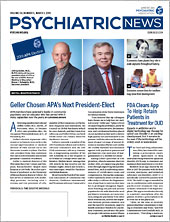A child or adolescent in the United States is far more likely to die from motor vehicle crashes or gunshots than in any other high-income country in the world, according to an analysis posted December 20, 2018, in the New England Journal of Medicine. The analysis was based on the most recent data from the Centers for Disease Control and Prevention.
The motor vehicle accident death rate among U.S. children and adolescents has been cut in half in the past 20 years, mostly due to widespread adoption of seat belts and car safety seats. Yet it is more than triple the rate in other high-income countries (5.21 deaths per 100,000 versus 1.63 deaths per 100,000), according to the report by Rebecca M. Cunningham, M.D., a professor of emergency medicine and director of the Injury Prevention Center at the University of Michigan Medical School, and colleagues.
As for firearm deaths, the rate of gunshot deaths among youth was higher in the United States than all other countries—both high income and low/middle income—with available 2016 data. In fact, U.S. youth were 37 times more likely to be killed by firearms than in 12 other high-income countries (4.02 deaths per 100,000 versus 0.11 per 100,000). Researchers attributed this to high rates of gun ownership and lax laws governing purchase, access, and storage.
“Children in America are dying or being killed at rates that are shameful,” wrote Edward W. Campion, M.D., in an accompanying editorial. “Both individuals and the larger society need to understand that there is much that can be done to reduce the rate of fatal trauma. Strong leadership by the medical and public health communities is needed. Education, awareness, and very feasible interventions can help protect children and adolescents.”
In fact, youth in the United States are 57 percent more likely to die by age 19 than those in other wealthy nations, Campion wrote. “The death of a child is a crime against nature,” he added. “These tragedies leave enduring pain and may be the most stressful thing that can happen to parents and siblings. The devastated families take no comfort from the fact that childhood deaths are now far less common than they were in centuries past.” He concluded that the United States is clearly not protecting its children.
In all, there were more than 20,300 deaths among children and adolescents in the United States in 2016, the most recent year for which data are available, and the majority—60 percent—resulted from injury-related causes. U.S. medical advances in treating infectious disease and cancer have been eclipsed by increasing deaths from injury-related causes, including motor vehicle crashes, firearm injuries, and the emerging problem of opioid overdoses, Cunningham and colleagues wrote.
Although many of these deaths are viewed as accidents, Cunningham and colleagues noted that “injury prevention science increasingly shows that such deaths are preventable with evidence-based approaches.” Motor vehicle crashes were the leading cause of death for children and adolescents in the United States, representing 20 percent of all deaths, followed by firearm-related injuries (15 percent) and malignant neoplasm (9 percent).
Since 2013, motor vehicle crash deaths have been on the rise among youth, possibly due to an increase in distracted driving because of cell phones and peer passengers, authors noted.
Youth deaths by firearm-related injury were near a 20-year high; in fact, there was a 28 percent increase in the rate of firearm deaths between 2013 and 2016. More than one-third of youth firearm deaths were suicides, a 26 percent increase between 2013 and 2016. Meanwhile, the rate of suicide by other means increased 15 percent.
Researchers found drug overdoses or poisoning made up nearly 5 percent of youth deaths in 2016, and the vast majority (78 percent) were unintentional.
The report noted racial and ethnic disparities in youth deaths in the United States. Youth mortality was highest among blacks (38 deaths per 100,000) and American Indian or Alaska natives (28 per 100,000) compared with whites (24 per 100,000). The disparities were most pronounced for firearm-related deaths, which were the leading cause of death among black youth and occurred at a rate nearly four times higher than the rate among white youth. ■
“The Major Causes of Death in Children and Adolescents in the United States” can be accessed
here. The accompanying editorial, “The Problem for Children in America,” is available
here.

